I won’t lie to you. My first kayaking experience was a nightmare. I was on a man-made lake that flowed into the Black Sea.
When boats carrying visitors passed through the channel used for exiting the lake and entering the sea, the water in the channel moved from one side to the other.
I was picturing a lot of terrifying scenarios. I could almost hear myself screaming for someone to come rescue me as my heart was hammering in my chest. It was terrible. But all changed when I got to calmer waters.
My perspective toward kayaking has changed, and I’ve begun to internalize the tranquillity the sea exhibits, drop by drop.
A Mix of Love and Hate
I may say that a mix of love and hate motivated me to begin my kayaking journey. In the meantime, the animosity has vanished, and I can now thoroughly enjoy each kayaking adventure.
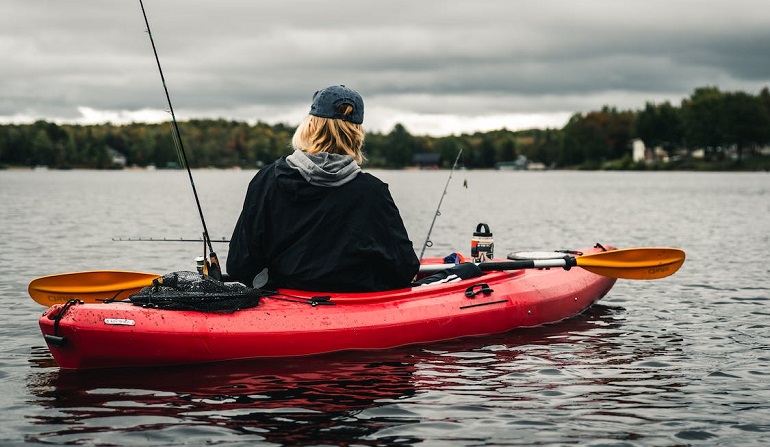
Anyhow, moving past my humble beginnings, I know that many people from all over the world find great relaxation in this activity.
So, it seems appropriate that we talk a little about how we can return the favor to the kayak that has taken us on so many adventures and through so many breathtaking landscapes.
One way we may achieve this is by storing our kayak in a way that will ensure its continued presence in our lives for a very long time. So let’s learn something about how to store a kayak.
Where To Store Your Kayak
There is a myth that storing kayaks correctly is not as important as maintaining and caring for them. This could not be further from the truth.
Storing your kayak incorrectly will result in damage, which can lead to expensive repair costs or, even worse—the loss of your beloved kayak itself.
If you want to keep your kayak in pristine condition and make sure that it lasts as long as possible (without having to spend an arm and a leg on repairs), then it’s absolutely essential that you know how to store it properly when not in use.
There are a few things you need to know about how to store a kayak, even if you are a kayak indoors or kayak outdoors kind of guy. You can think about these as rules for a kayak that will last you a long time. Of course, if you prefer inflatable kayaks, things are easier.
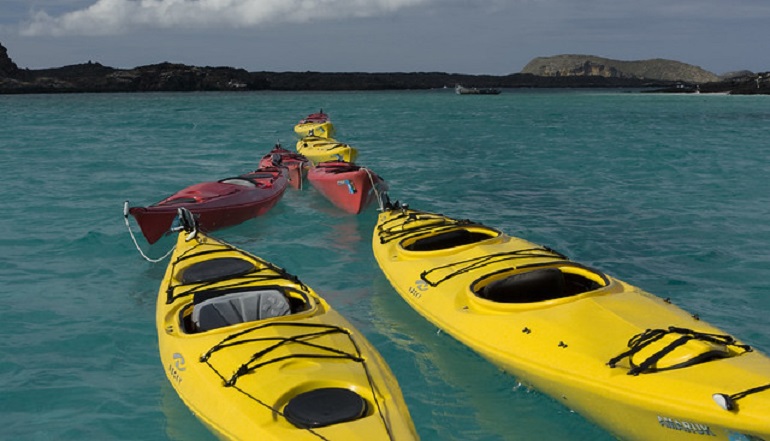
Sunlight
Sunlight can damage the surface of your boat, its hull, and fragile materials. Also, sunlight can cause the kayak cover to fade or even crack from too much exposure.
Moreover, sunlight can cause the kayak to warp, which means that when you go out in it again, the boat won’t be straight anymore.
So, if you store your kayak outside, you need to keep it away from direct sunlight.
Moisture
Moisture is another thing that can cause harm to your kayak. Excessive moisture could promote mold growth and weaken the kayak’s hull material.
When storing your kayak, try to keep it in a dry place that’s well-ventilated. If you must store it outside, make sure you put it under a tarp or cover. And if possible, bring the boat inside during heavy rainstorms so that it doesn’t get damaged by water.
Heat
If you have to store your kayak indoors, make sure it’s not too close to heat sources like radiators or fireplaces because they will make the wood crack.
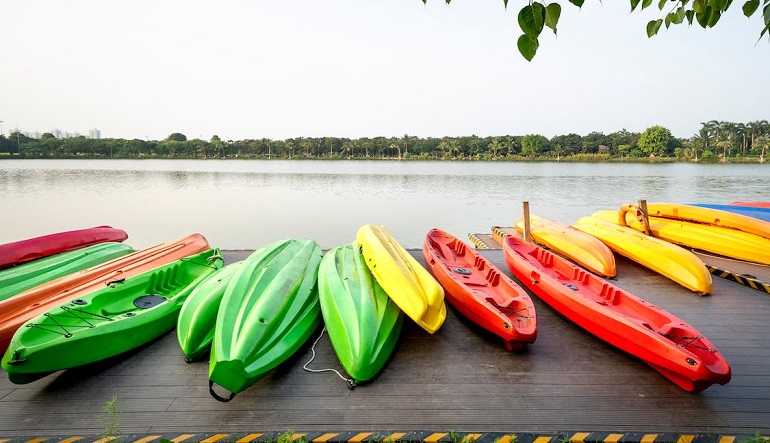
Being close to a heat source is not good, even if you have a plastic kayak, because the material will get damaged. Keep your kayak away from extreme heat.
Cold
Cold temperatures can also crack a hull if they’re allowed to get too cold too fast (think freezing rain). The best way to prevent this is by storing your kayak in a warm, dry place.
If you need to store it outside, try bringing it inside during cold winter months and putting down plastic sheeting or tarps over it.
Clean the Kayak Thoroughly
You can’t just get your kayak out of the water directly to your storage area. Let’s be serious, such amazing gear needs some special treatment, don’t you think?
Before you take your kayak to the storage area, you need to do two important things if you want to treat your kayak properly:
- Clean all dirt off with soap and warm water;
- Dry any wet areas with a rag or paper towels.
To be a bit more detailed, clean your kayak with mild detergent and warm water. Be sure to dry it thoroughly before storing it.
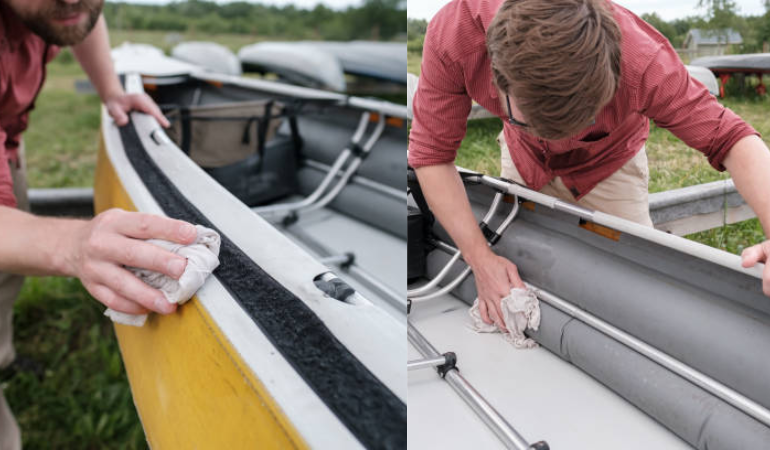
You can use compressed air or a hand-held vacuum cleaner to get all of the water out of every nook and cranny on your kayak before storing it, but this is not necessary if you don’t have access to either of these products. You can keep it simple: mild detergent, warm water, and some paper towels.
Locate a Place To Store the Kayak
Now, you know some clear kayak storage tips in order to treat your kayak properly, and you also know what you need to do before putting it away, so let’s talk a bit about the perfect place to store a kayak.
The first decision you need to make when storing your kayak is where. The answer depends on whether you want your kayak stored outdoors or indoors.
If you live in an area with harsh winters and lots of snowfall, then an indoor location is best since it will protect the boat from damage, such as cracking, due to freezing temperatures.
On the other hand, if you live in a warmer climate where rain or sun may be an issue, then storing it outdoors is better because it can help prevent mold growth inside that might otherwise ruin your boat’s finish over time.
But let’s talk a bit more about each option you have.
Outdoor
If you can’t store your kayak inside, which is one of the best options you have, it is ok to store it even outside, but you need to make sure of a few things.
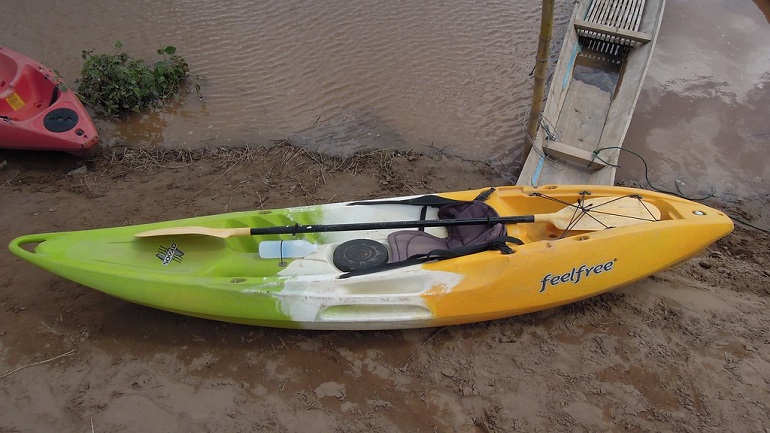
First, store your kayak in a covered area. The ideal place is one that’s dry, rodent- and pest-free, and out of the way of vehicles and children. Second, make sure the area is stable enough to hold the kayak’s weight without risk of collapse or damage to either you or your boat.
If you’re storing your kayak outside, it is really important to make sure it’s in a shady spot. The sun can weaken the integrity of the materials used to make your kayak, causing fading and cracking. Plastic components can become brittle as well.
You can also use a strong sun protective spray to add UV protection for proper storage in a good location outside.
Indoor
If you’re storing your kayak inside, the best place to store it is in a garage or basement. If neither of those is available, consider renting a storage space for your kayak. It’s important to keep it away from direct sunlight, as UV rays can cause serious damage over time.
Extreme temperature changes are also harmful to plastics, so try to avoid keeping your kayak in places that experience extreme temperatures (such as near a radiator or heater vent) or in areas with frequent temperature fluctuations.
When comparing kayak vs. canoe storage methods, it’s important to note that plastic kayaks should be stored on their sides, while canoes are typically stored upside down.

So, let’s summarize a bit before we go on to another very important rule when it comes to kayak storage.
While a boat isn’t the most delicate of possessions, it’s still important to take care of it. If you store your kayak in an area that’s not well-ventilated or has direct sunlight, you’ll be exposing it to certain dangers.
Sunlight can damage the surface of your boat, its hull, and fragile materials. Moisture can cause corrosion, and extreme heat can damage the foam core of the kayak.
For prolonged storage of your kayak, try to keep it in an upright position in a dry place that’s well-ventilated. If you must store it outside, make sure you put it under a tarp or cover. And if possible, bring the boat inside during heavy rainstorms so that it doesn’t get damaged by water.
When it comes to inflatable kayaks vs. hardshell, inflatables are an excellent choice for easy transportation and storage due to their lightweight and compact design.
Don’t Position the Kayak on a Hard Surface
This rule needs a separate section, right? The temptation to simply set your kayak down on a hard and flat surface and wait to use it again can be tremendous. In essence, what might happen?
While you may want to store your kayak in a garage or basement, don’t plop it down on the ground—even if you have some padding under it. You risk damage to the hull and cockpit if you do this, which can lead to costly repairs or even replacement of the boat.
It is best to store your kayak vertically so that water does not pool around it and cause corrosion in its components. If possible, keep two or three inches of clearance between your boat and any wall or ceiling.
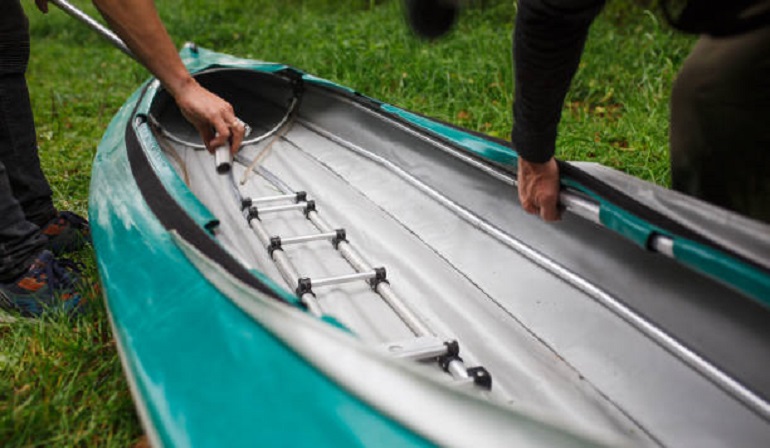
If this is not possible due to size constraints, then make sure there are no gaps between where your boat touches the floor/wall and where they meet (this includes mounting brackets).
Storing your kayak upside down is a good way to keep it dry and prevent water from pooling inside the hull. If you can, store your kayak on a kayak rack or saw horses so that it’s elevated a few feet off the ground. This allows for better air circulation and helps prevent mold growth. You can buy or build a storage rack for your kayak.
Kayak Storage Options
We all know the frustration of not having enough space for our stuff. If you have a kayak, this is especially true! Luckily, there are plenty of ways to store your kayak without taking up much space, and it doesn’t matter what kind of kayak you have – you can have the best river fishing kayak or a recreational kayak.
Things are the same!
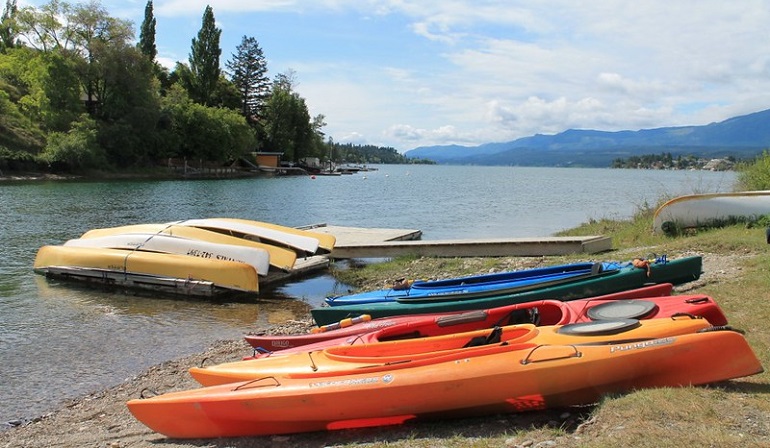
Still, for outdoor or indoor storage, don’t forget to use a storage rack, the best option for storing kayaks properly. So, let’s talk about some kayak storage solutions you have, both when it comes to outdoor storage and indoor storage.
Outdoor Storage Options
If you’re lucky enough to have an outdoor space to use for your kayaks, you can look into the following options.
Storing your kayak outside doesn’t mean that you can leave it on the grass, you still need some designated construction, and this is why some of the following options may seem like inside ones:
- Carport: A carport is like a garage but generally smaller and designed only for cars or motorcycles
- Covered porch: If you live in a climate where it rains frequently and has warm summers, this might be a good option since it will provide added protection from both rain and sun.
- Boathouse: A boat house is usually separate from the main building on someone’s property and is usually reserved just for storing boats.
- Shed: This is another kayak storage solution you have. It is like a boat house but smaller; sometimes called an outbuilding.
Indoor Storage Options
If you don’t have enough space outside, maybe inside is a better option for you and your kayak. Keeping your kayak indoors is the best way to store a kayak.
Here are some ideas for inside storage:
- Garage: This is one of the most common places for kayak storage. If you need more space, consider building a little room inside your garage (or even outside) that can be used specifically for storing your kayaks.
- Basement: The basement is another option for storing your kayak, but you need to make sure that the space is really dry and well-ventilated.
- Storage unit: If you don’t have enough space at home, you can also look at renting a storage unit. Make sure that the facility has an alarm system and security cameras in place. Many facilities also offer 24/7 surveillance to deter potential thieves.
Theft Protection
You may store a kayak in a variety of ways, as you’ve seen; all you need to do is choose the one that works best for you. If you don’t want to discover one day that your kayak is gone, once you’ve chosen the ideal kayak storage solution, you also need to think about theft protection.
There are also several methods available to you for theft protection, some of which are more secure than others.
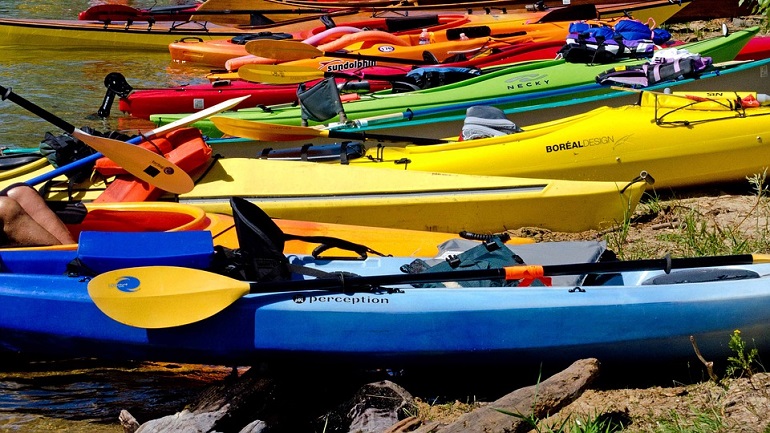
- Locking cables: This is a long stretch of cable that you wrap around your kayak. This is the most common way to keep your kayak safe while it’s in transit or at home.
- Lockable racks: These racks come in both hard-shelled and soft-sided varieties but generally offer two benefits over standard tie-down straps when it comes to security:
- They’re designed not only to hold down tie-downs and other gear but also serve as theft deterrents;
- They’re often lockable so as not only to prevent theft but provide an extra layer of protection against tampering during storage periods (if left out). If you also need some racks for transit, there are some best truck racks for kayaks.
- Locks for boats themselves (fiberglass vs. plastic): While most fiberglass boats will come equipped with locks from their manufacturers (often requiring specialized keys), plastic boats tend not to do so.
Conclusion
I hope you learned something new about how to store your kayak and that you can choose the right kayak storage solution, both when it comes to indoor and outdoor kayak storage.
After you find proper kayak storage, I strongly recommend keeping the kayak clean and dry at all times. The best place for storing your kayak is indoors, where it will be safe from theft and sunlight damage, but if not available, there are plenty of other options out there.
If you’re looking for the best way to keep your kayak protected, I recommend storing it upside down on saw horses. These racks can be purchased at hardware stores or online and are easy to assemble.
What it will be: kayak outdoors or kayak indoors?

